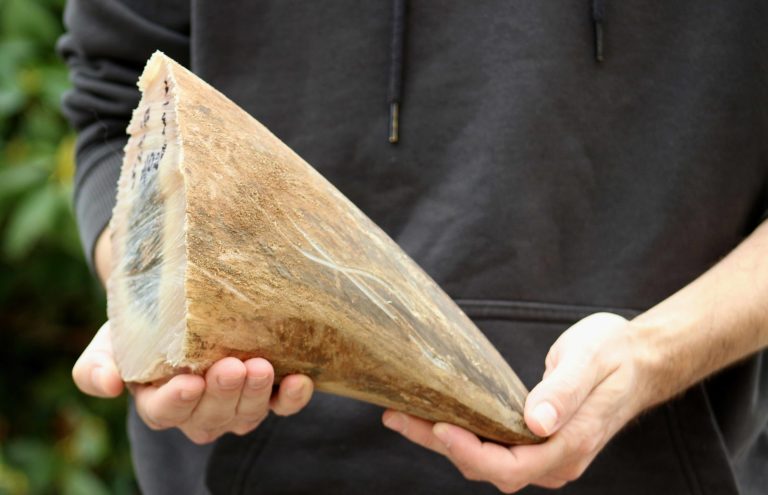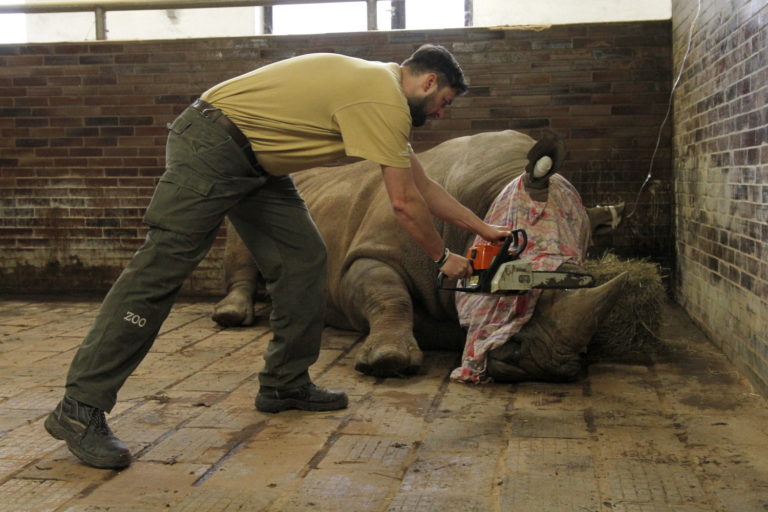- The dehorning is in response to an incident in Paris earlier this month, in which poachers broke into a zoo near the city, shot dead a 4-year-old male white rhino, and hacked off one of its horns.
- The Dvůr Králove Zoo, home to 21 rhinos, sawed the horns off its first rhino on March 20.
- The authorities said that the horns will be stored in a “safe place” outside the zoo.
Earlier this month, poachers broke into a zoo near Paris, shot a 4-year-old male white rhino thrice in his head, and hacked off one of his horns. This is believed to be the first instance of a rhino being attacked at a zoo in Europe.
Now, worried about a potential poaching attack, the Dvůr Králove Zoo in Czech Republic has started removing horns of its resident rhinos.
“The decision to remove rhino horns was not made easily at all,” Přemysl Rabas, Director of Dvůr Králové Zoo, said in a statement. “However, the risk that the rhinos currently face not only in the wild but even in zoos is too high and the safety of the animals is our first concern. The dehorned rhino is definitely a better option than the dead rhino. Any other measures are not so deterring as the fact that in our zoo there are no rhinos with horns left.”

The zoo — home to four southern white rhinos (Ceratotherium simum simum) and 17 black rhinos (Diceros bicornis) — sawed the horns off its first rhino, a 10-year-old male southern white rhino named Pamir, on March 20. Pamir was anaesthetized and the removal of his horn took less than an hour.
Anaesthetizing the rhino is necessary, the authorities said, to keep it calm while its horn is being removed using a chainsaw. But the entire procedure is painless for the animal, they added. The Dvůr Králové Zoo has in the past trimmed their rhinos’ horns as a safety measure during transport of the rhinos or for medical reasons.
“The procedure is painless as the horn is made mostly of keratin (which our fingernails or hair are made of). Moreover, the removal is not irreversible, the horn gradually grows back,” Rabas said.
The authorities said that the horns will be stored in a “safe place” outside the zoo.

The global trade in rhino horns is banned by the Convention on International Trade in Endangered Species of Fauna and Flora (CITES). However, poaching of rhinos continues due to a surge in demand for rhino horns in Vietnam, where the horns represent a symbol of wealth. Rhino horns are also popular in Chinese and Southeast Asian markets, where they are (incorrectly) believed to cure a range of illnesses.
Attacks on rhinos in captivity also seems to be increasing. In February, for example, armed poachers reportedly entered a rhino orphanage in South Africa and killed two rhinos and cut off their horns.
Organized poachers have also targeted rhino trophies placed in museums and castles, the zoo said. “In 2011, the Dvůr Králové Zoo lent out its rhino horns for an African exhibition at the Napajedla Castle. These horns were stolen – whereas the criminals were tracked out, the horns were never seized,” they added.
Following the attack in France, experts from the Dvůr Králové Zoo are also assisting the Senegal Bandia Reserve to remove the horns off their rhinos. The Pairi Daiza zoo in Belgium has also announced its intention of doing the same.